Encore: Sichuan Spices Dinner with Chef Deng
Article and photos by Michele Wisla
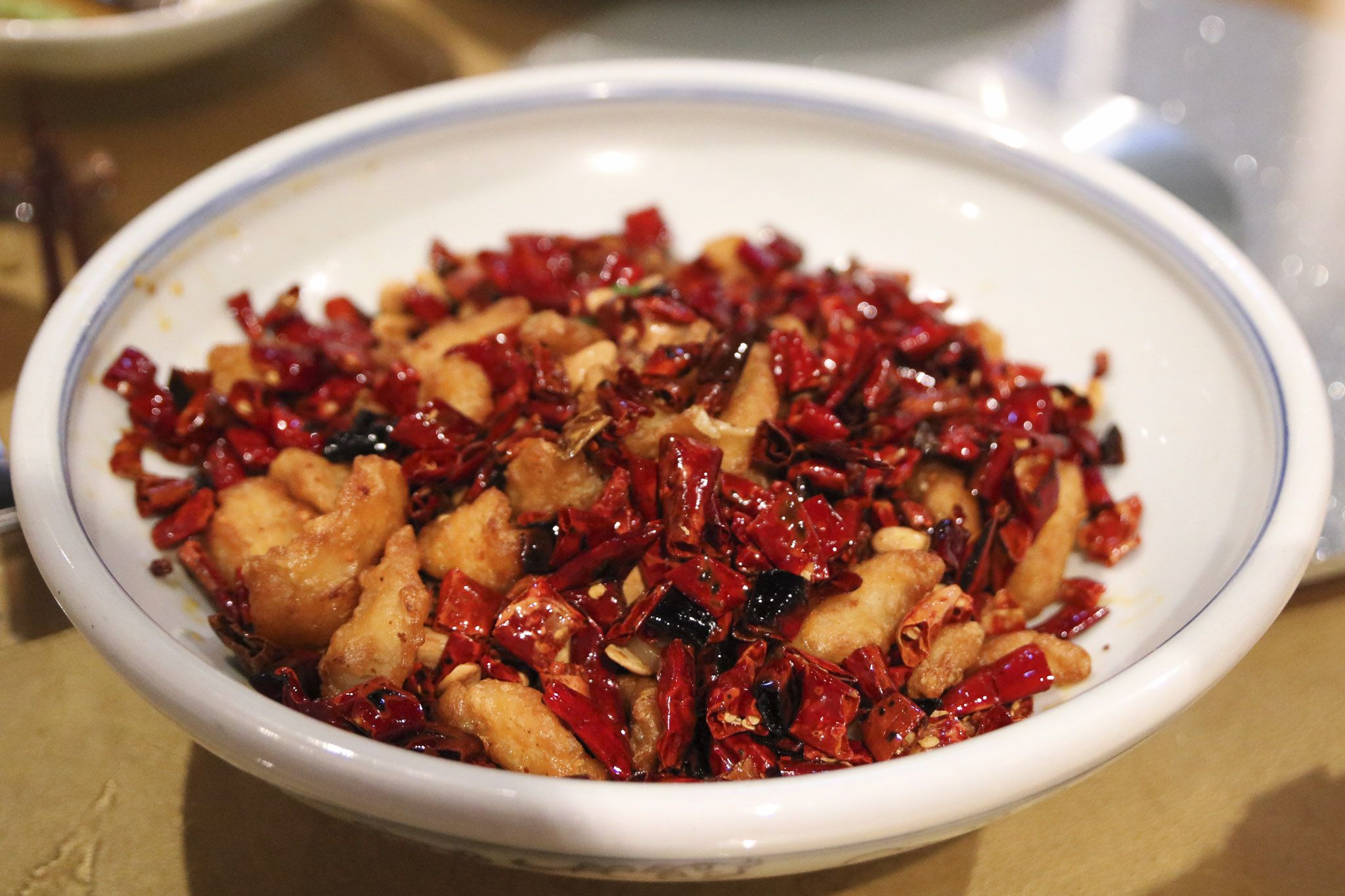
China is the place for Food.
But Sichuan is the place for Flavour.
Slow Food Hong Kong was again immersed in Sichuan, the land of flavour for an encore dinner with Chef Deng on February 6, 2018. The diverse and multiple flavours the province is known for, sometimes all in one dish, is what makes it the land of flavour above all others. So it was no surprise that it was another sold-out dinner, with 60 guests, double the participants from the first dinner in September 2017.
When you think of Sichuan food, the first thing that comes to mind is ‘hot & spicy’, but mouth numbing heat isn’t the main characteristic of true Sichuan food, nor is it that simplistic. Chinese food, like western food, has similar basic tastes. Sweet, sour, salty, bitter and umami. In Sichuan food there are two others, the ‘ma’ (numbing) and the la (hot). In Sichuan cuisine, hot can be expressed many different ways. There are dried whole chilies, ground dried chilies, pickled chilies, chilli oil and fermented chilli bean paste. The Sichuan fraternal twin of la, the ‘ma’ flavour comes from the small hua jiao pepper. For such a tiny pepper, it invades your taste buds like nothing else. The experience is a mix of candy pop-rocks, soda and pins & needles in your mouth, all with a subtle lemon flavour. A delicate touch is needed to bring out the proper amount of punch here. No worries on that front, we were in the hands of a true pro!
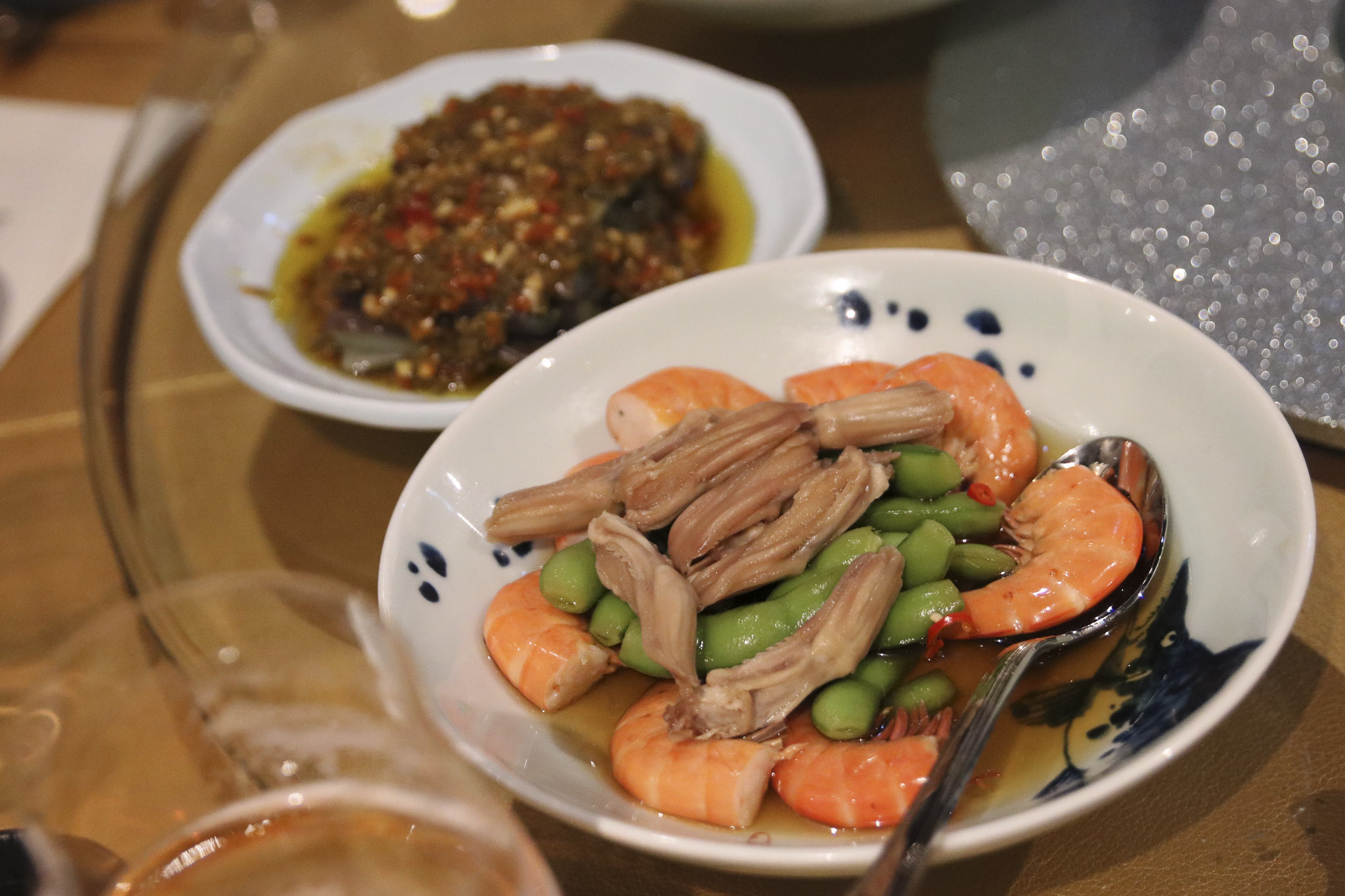
Sichuan food is also one of the most complex of all Chinese cuisines because the basic tastes are combined to create over 20 different flavours and these are put together using over 50 different cooking methods from dry frying to stir-frying with different braising methods and more in-between.
Chef Deng excelled by skillfully combining different flavours within each dish, for example using sour to balance sweetness and heat to balance the prickly ma flavour so nothing overwhelmed here and the tastes were varied and interesting as you tried to identify all the elements.
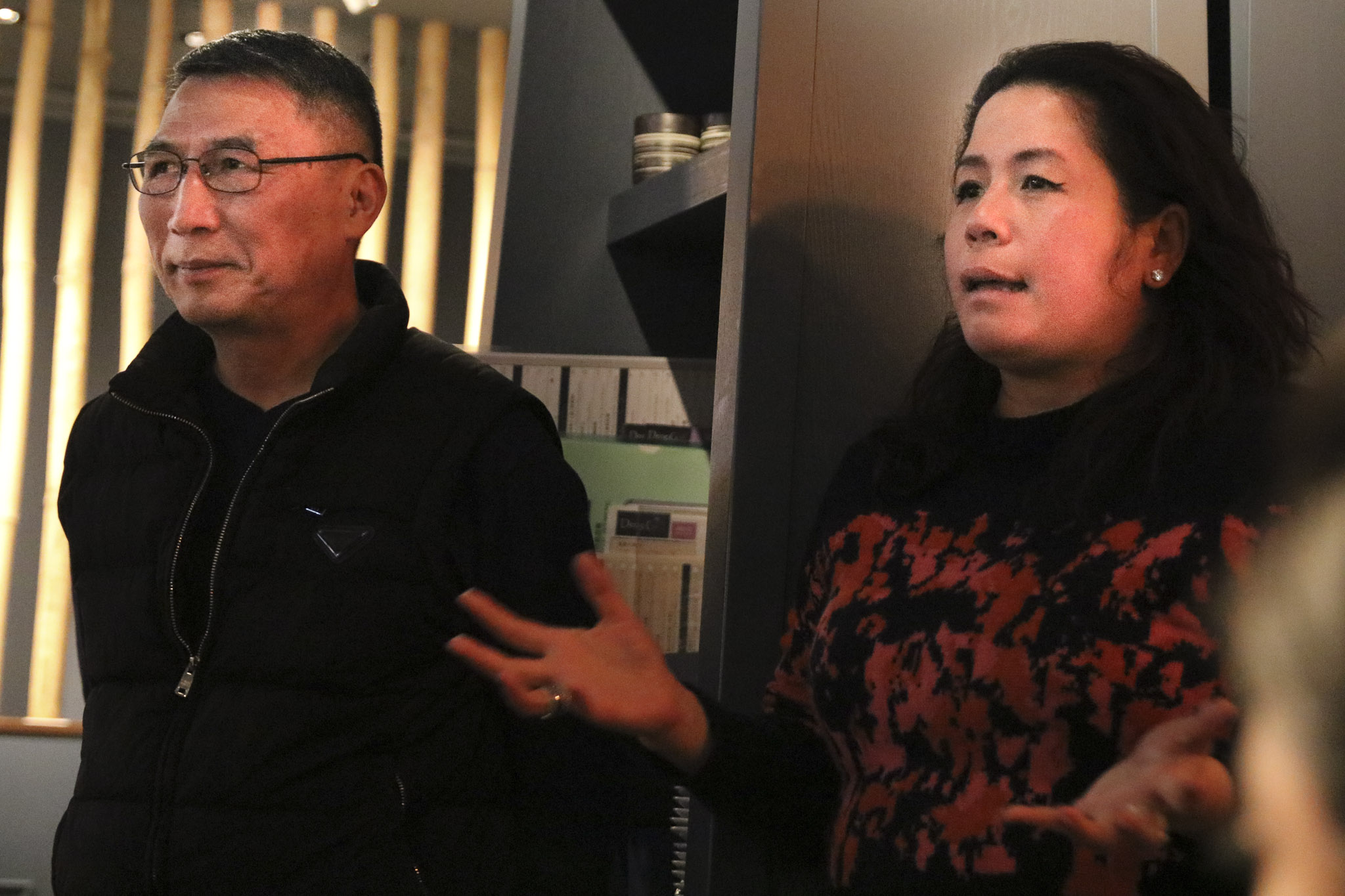
The starters included:
Marinated Shrimps, Duck Tongues & Beans in Osmanthus / 糟醉三寶
Roasted Bamboo Shoots / 燒拌春笋
Roasted Eggplant with Red Chilli / 燒椒茄子
Sliced Pork with Garlic & Chilli / 蒜泥白肉
Ox Tongue & Tripe Medley / 夫妻肺片
The starters made good play on another element of Chinese and Sichuan food, that is not always paid attention to in the same manner with western food – the texture. The duck tongues had a springy bite to them which contrasted nicely with the firm but fleshy shrimp and softer beans. The young bamboo shoots also had a slight crunch to the ’bite’ and a perfectly balanced ma-la flavour. Roasted Eggplant was a softer play against some of the firmer textures and as the chilli oil woke up the palate, the eggplant somewhat melted in your mouth. The thinly sliced pork was excellent, garlic and chilli playing in perfect harmony. Rounding out the starters, the ox tongue & tripe were also perfectly spiced. The spicy elements were all there in full glory, but nothing overwhelmed the essence of the main ingredients.
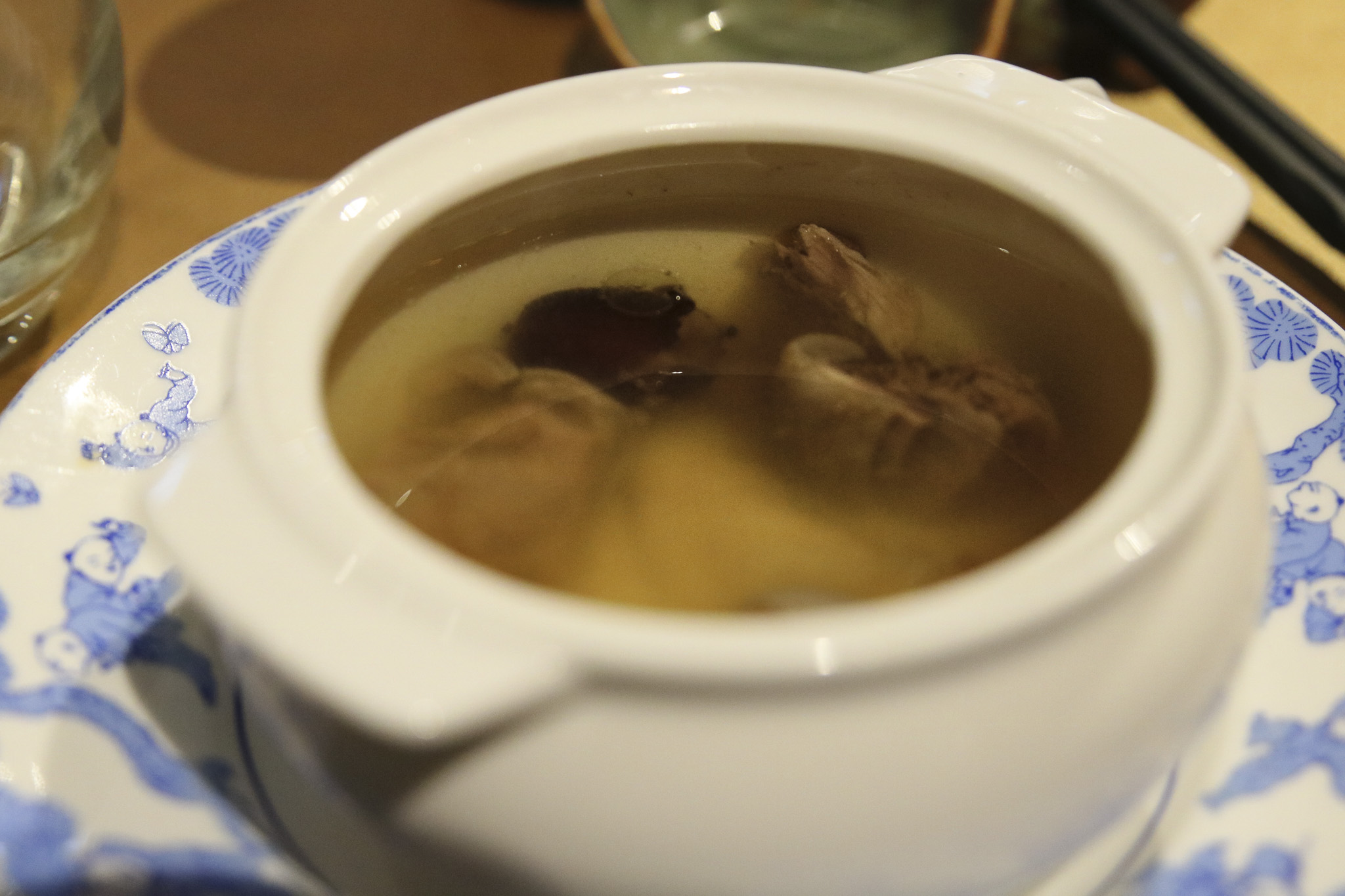
As a break between the starters and the mains, we enjoyed Herbal & Mutton Soup / 歸芪羊肉. A clear soup that was pleasantly herbal and clean tasting. The mutton was extremely tender, yet still bursting with meaty flavour.
The mains included:
Dry Braised Prawns /乾燒蝦球
Camphor Smoked Duck / 樟茶仔鴨
Deep-fried Fish in Mala Sauce / 麻辣魚塊
Braised Beef Rib with Pepper Powder / 香烤牛肋骨
Yu Xiang Chicken / 魚香雞塊
Dry Sautéed String Bean / 乾煸四季豆
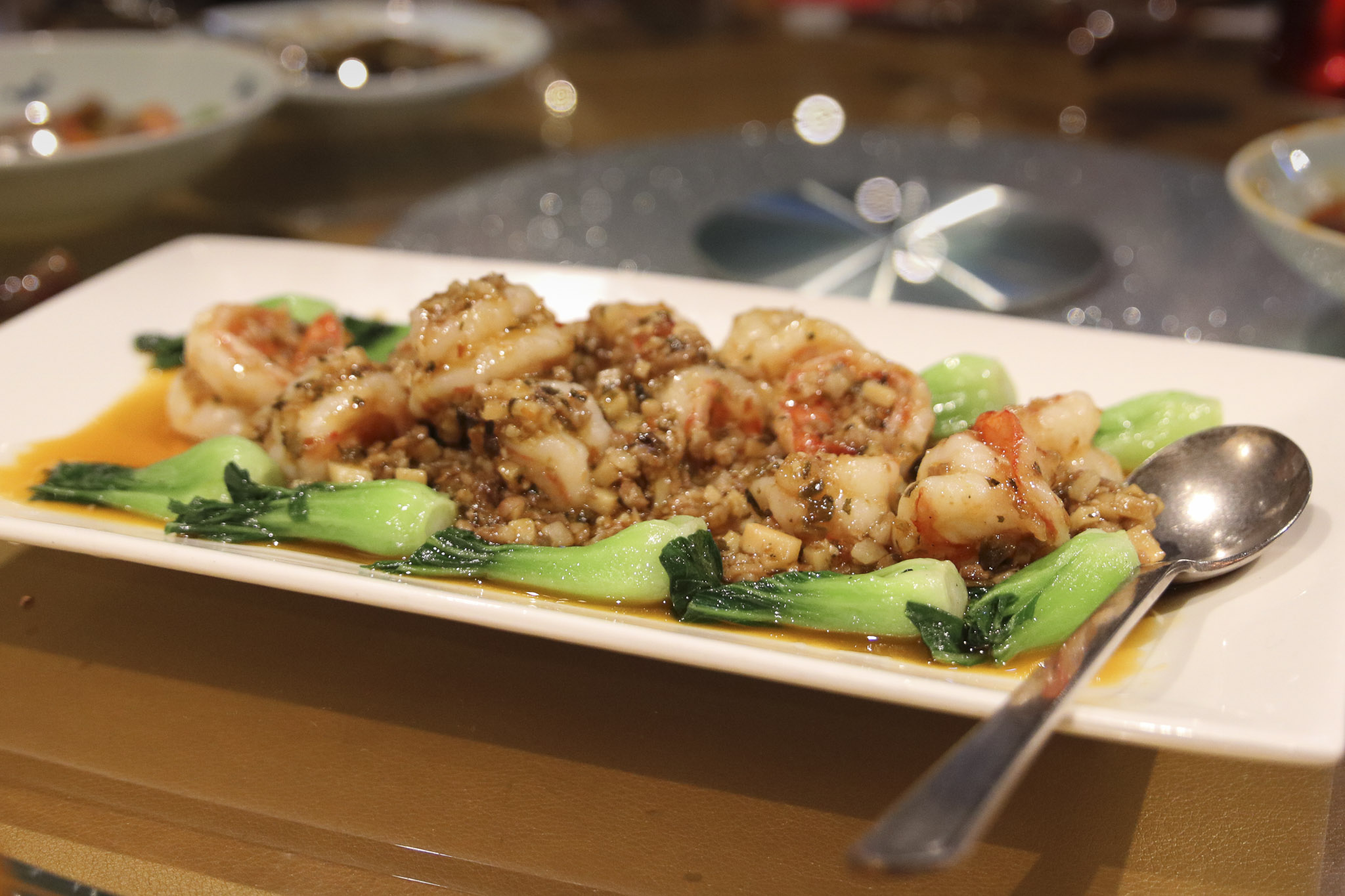
The dry braised prawns were excellent. Tender, yet a bit of crispness on the outside, the flavour was mild and harmonious. Camphor smoked duck had a very intense smokiness. Although intense, it wasn’t overwhelming and stood out for being unique from the other flavours we experienced so far. The deep-fried fish in mala sauce was perfectly done, strong mala flavour but you still tasted and enjoyed the fish. After enjoying a few non-ma la dishes, it bought out your appetite again to continue on. The braised beef with pepper powder was tender and well flavoured, if a bit salty. Yu Xiang means fish fragrant flavour, although there is no actual fish in it. It made up of seasonings that are traditionally used to flavour fish. Pickled chillies are used in the base, along with ginger, garlic and spring onions. The flavour was a blend of sweet, sour, salty and spice. The dry sautéed string beans balanced other spicy dishes with a sweetness that came through.
We ended with:
Pork Dumplings / 紅油抄手
Fried Rice, Chengdu Style / 成都炒飯
Sweetened Snow Fungus & Lotus Seeds / 銀耳蓮子羹
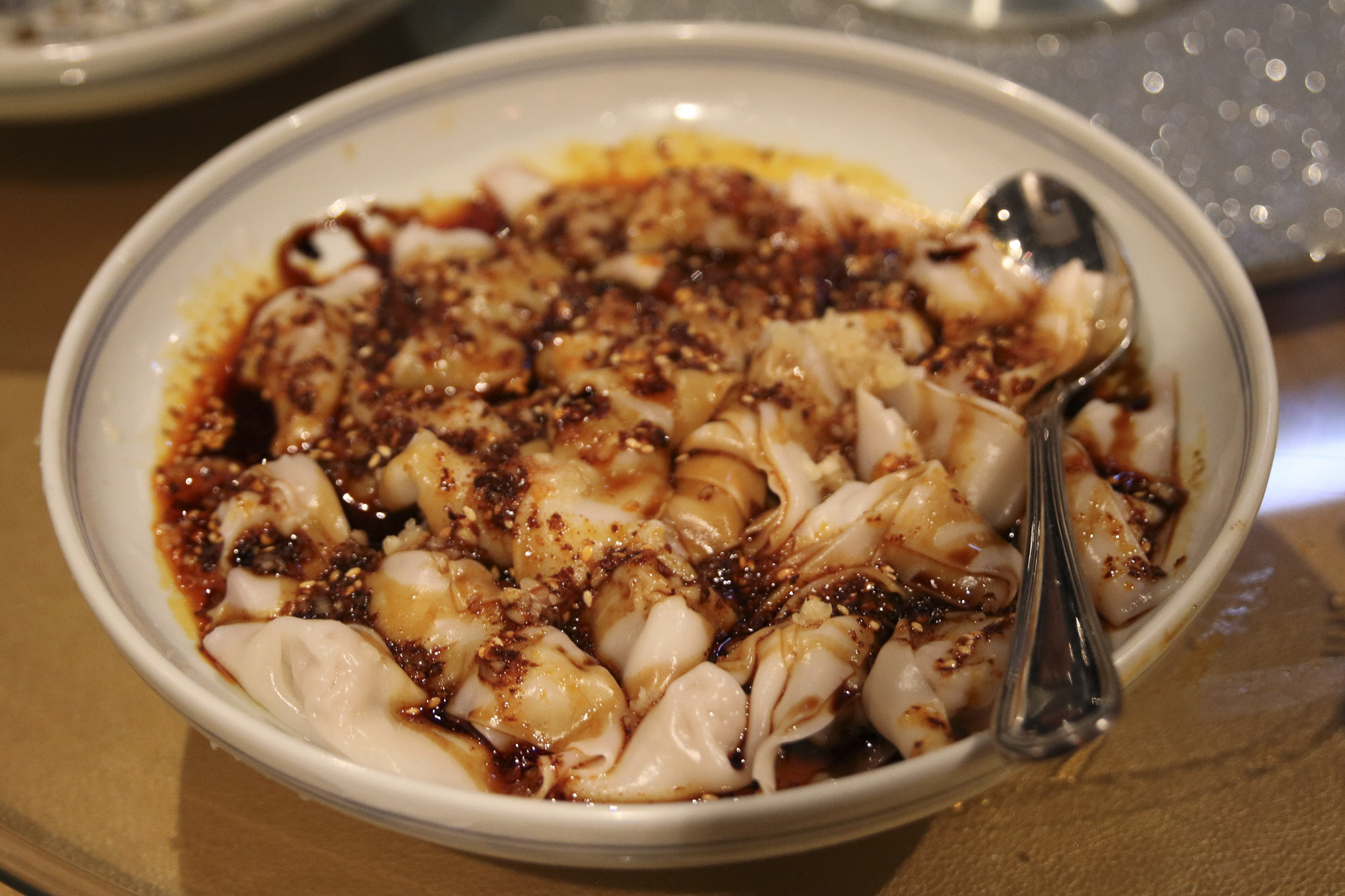
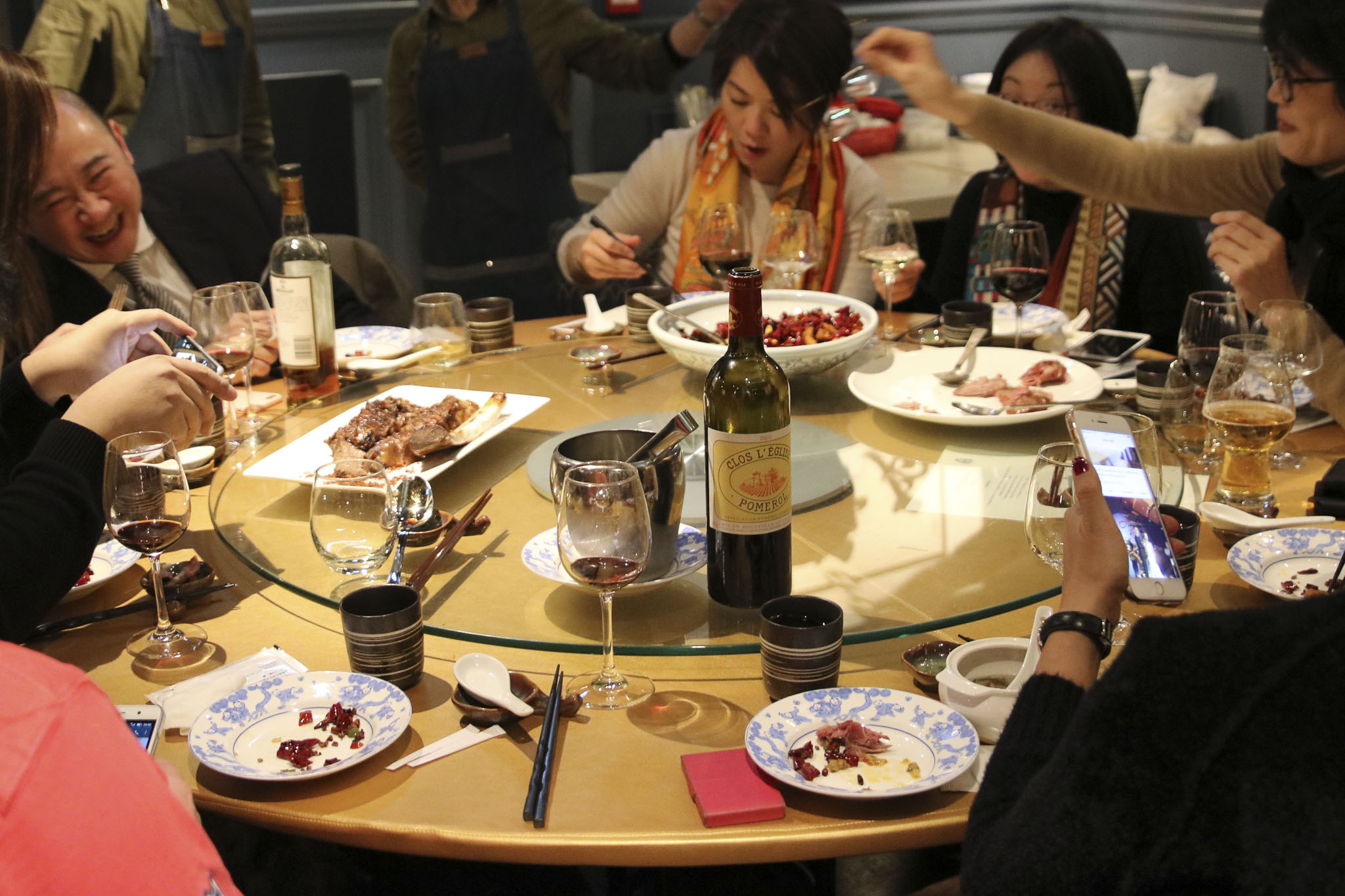
The pork dumplings were perfectly ma la! The dumpling skins thin and filled with sweet pork. Fried rice, Chengdu style had a meaty aroma to it, filled with a umami taste. A perfect ending with the sweetened snow fungus & lotus seeds, not too sweet but enough to refresh the palate after many of the strong unique flavours.
The land of flavour, as created by Chef Deng, lived up to its reputation and offered an opportunity to experience something more than just the often talked about chilli peppers.